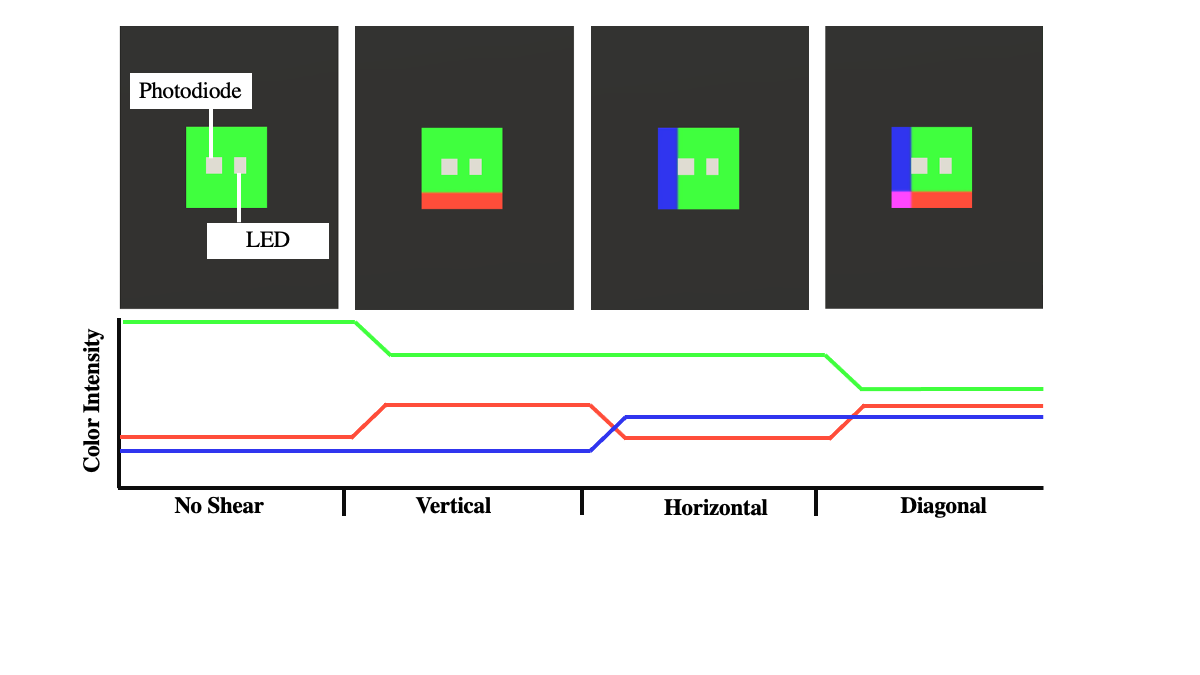The need for miniaturized shear force sensors is expanding, particularly for biomedical applications. Examples include measuring interfacial shear stresses between a human and an external device (e.g., footwear or a prosthesis). However, there are considerable challenges in designing a shear sensor for these applications due to the need for a small package, low power requirements, and resistance to interference from motion artifact and electromagnetic fields. This paper presents the design, fabrication, and characterization sensor that measures two-axis shear force by detecting displacement between a color panel and a red, green, and blue light-sensing photodiode. The sensor response to applied displacements and forces was characterized under benchtop testing conditions. We also present the design of a prototype wireless version of the sensor for integration into footwear. The sensor exhibited strong agreement with gold standard measurements for two axis shear displacements (R2>0.99, RMSE≤5.0 µm) and forces (R2>0.99, RMSE≤0.94 N). This performance, along with the sensor’s scalability, miniaturized form, and low power requirements make it well-suited a variety of biomedical applications.

